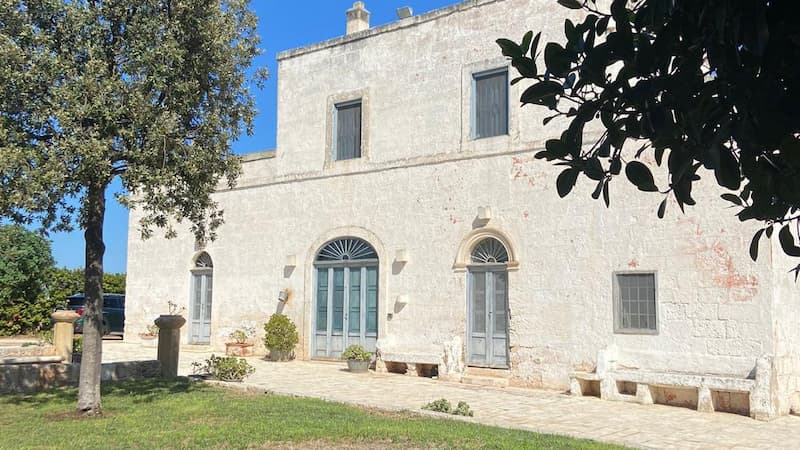The famous Lecce stone of Puglia
Puglia has a rich history, enhanced by the succession of visits from people of different cultures, times, and ideas. Each culture left traces of itself throughout Puglia and perhaps the easiest way to see evidence of this is through the Lecce stone, a feature of most towns in Puglia, particularly in the Salento region.
Puglia is famous for its varied architecture thanks to Lecce stone. It is carved into dolmens, menhirs, forts, temples, villas, monuments, and churches, each serving as a legacy to those who have gone before.
The reason Lecce stone is used for Puglian buildings is because of its malleability. It’s a brilliant type of stone for carving and hardens over time to transform into a warm, honey-ish tone. The fact that Lecce stone hardens so well is why its ancient baroque features have survived intact for people to see today. Meanwhile, its malleability allows it to be carved into the shapes of flowers, fruit, and dancing cherubs, attaining standards often only seen in jewelry.
Lecce stone comes in a myriad of varieties, each obviously distinguished by texture, color, and their physical and chemical properties. The stone originates from the Miocene period, approximately 23 millions years ago, and this history led to the discovery of fossils in the stone, with many fully preserved specimens.
Lecce stone can emerge naturally from the soil and gets its name from the fact that outcrops are found exclusively in the province of Lecce. There are several large beds of Lecce stone, including four main beds across the region, composing different varieties of the stone.
As the skill of stonemasons developed, more imaginative construction techniques were invented. As such, the houses of Salento tend to feature Lecce vaults, showcasing construction techniques such as cornered, barrel and star vaults. These vaults were not just for beauty, however. Houses built with star or corner vaults are much warmer in the winter but cooler in summer, thanks to their ability to distribute heat more evenly.
Each Salento house should bear the name and signature of the builder. For the more famous builders, their personal techniques are so unique that merely by observing the style of the house, can the builder be identified.
One ritual that was part of the building of houses in Lecce was the burying of a saint. The owner of the building would arrange for an image of a saint to be buried in the foundations or the apex of the vault. It is believed that this brings good fortune to the house.
In the past, Lecce stone also had some cultural uses. When a farmer’s livestock was stolen, he would place two huge stones at the entrance to his farm, one on top of the other. The message would be clear to anyone passing: if someone tried to steal from the farmer again, they would crush the thief’s head between two stones!
In more recent times, Lecce stone has become a valuable material for construction and, most importantly, architecture, and is a key part of the restructuring and restoration of buildings across Puglia.




.jpg)

.jpg)
.jpg)


.jpg)
.jpg)
.jpg)
.jpg)







